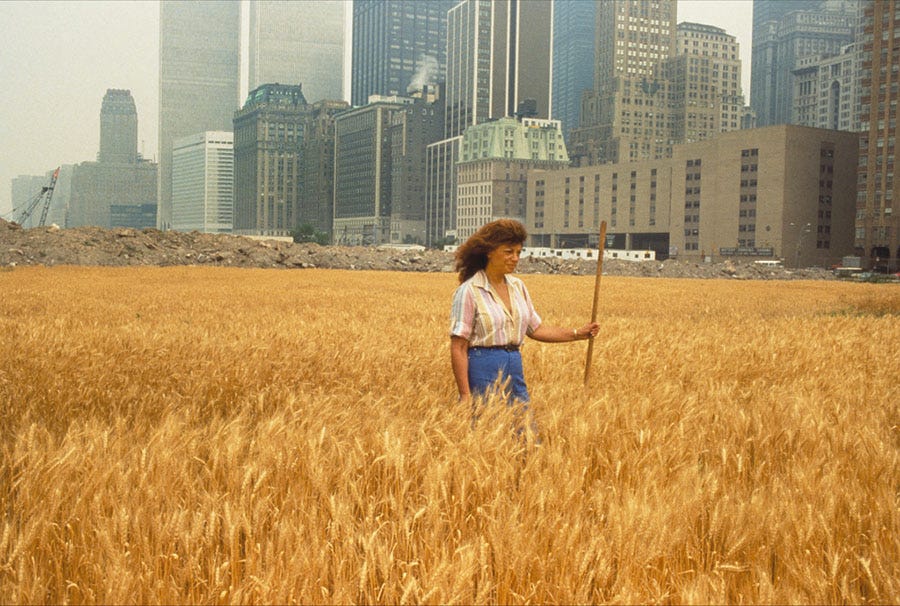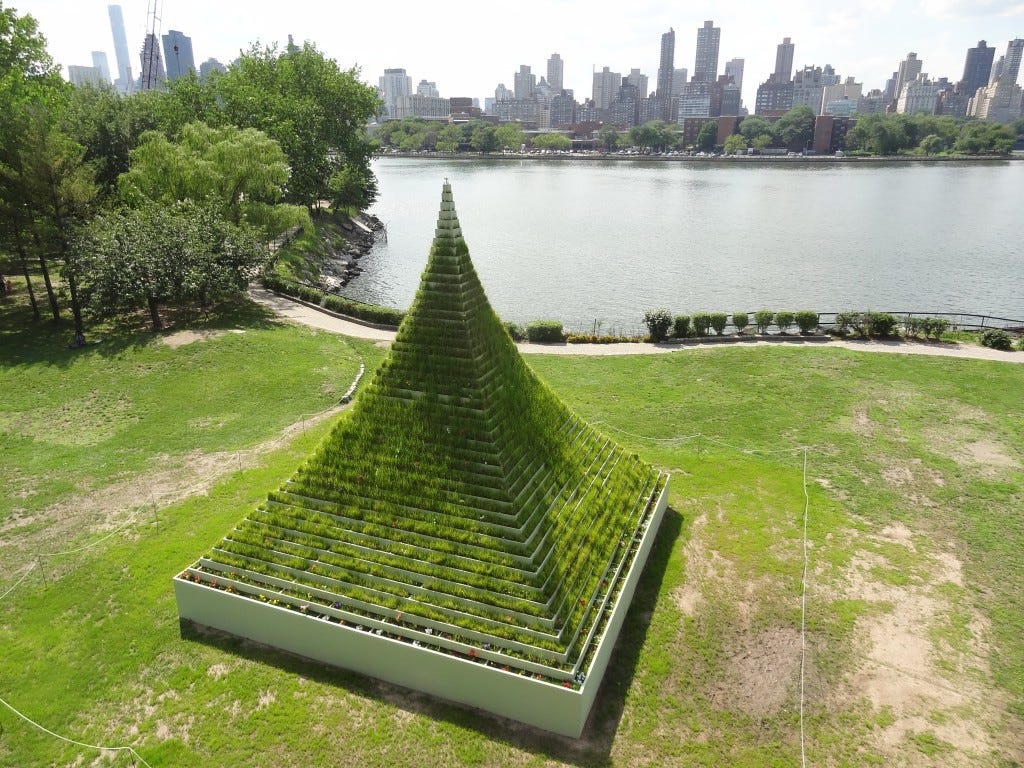Resources to help the people of Palestine:
Sign the petition: Not Another Bomb! Kamala Harris, Pledge to Enact an Arms Embargo
No War, No Weapons Digital Concert August 15th @ 6 PM PT
Not Another Bomb Days of Action August 16th-18th
6 ways you can support Palestinians in Gaza
Divesting for Palestinian Rights
Ceasefire now and forever.
Illustration
Scooter is getting older. His 7th gotcha day is next Monday and we think he’s about 16 years old. He’s the embodiment of taking your time these days. Everything he does is much slower. It simultaneously feels like we have all the time world and not enough time together at all.
Inspiration
It’s summer, and what better time to explore land art. Summer invites us outside to be more in touch with our senses and to explore the natural world. Land art emphasizes and highlights the earth's beauty, brilliance, and designs. Complex to commodify and challenging to buy or sell, Land Art challenges the life of a painting, going from wall to wall and auction to auction, but instead only working in the context of its creation. Ironically, that makes it even more of a hot commodity, as only the highest bidders can buy the land just for the art. In that way, it also challenges the boundaries of the piece, as the buyers also must buy the dusty trail, the dry creek, or maybe even the townspeople themselves along with the ‘piece’.
Agnes Denes is a visionary, pioneering land artist. Her work defies easy categorization, as it spans art, science, mathematics, philosophy, ecology, and conservation. Her works are meticulously planned and imbued with meaning, drawing from nature, the environmental movement of the 1970s, and a desire to minimize the human impact on the natural world and push society into a future where we’re more conscious and connected with nature. She talked about protecting the environment and about climate change before it became a necessity.
Denes is perhaps best known for Wheatfield—A Confrontation: Battery Park Landfill, Downtown Manhattan.

In May of 1982, Denes and her team hand-planted a two-acre wheatfield in the Battery Park Landfill in lower Manhattan, just two blocks from Wall Street, and by August, they harvested over 1,000 pounds of wheat. In the artist’s words, Wheatfield “created a powerful paradox. Wheatfield was a symbol, a universal concept; it represented food, energy, commerce, world trade, and economics. It referred to mismanagement, waste, world hunger and ecological concerns. It called attention to our misplaced priorities.”
The juxtaposition of farmland and the financial district is powerfully jarring, taking us to a past version of New York City and reminding us of who the land was stolen from. Wheat is real, tangible, and can nourish people and animals. It looks so unusual amidst the chaotic cityscape that surrounds it.
Another of Denes’ astounding works of land art is Tree Mountain—A Living Time Capsule—11,000 Trees, 11,000 People, 400 Years. Tree Mountain is a manmade mountain that measures 1,378 feet long, 886 feet wide, and 125 feet tall and is comprised of 11,000 trees planted by 11,000 people. Tree Mountain was constructed over the site of an abandoned mine in Finland. Resource extraction depleted the land; however, through phytoremediation, the trees act like a pump, absorbing these harmful chemicals in the ground through their roots. Tree Mountain both symbolically and physically restores the land to perhaps what it once was, and one is more environmentally beneficial.
The trees were planted as “an intricate mathematical pattern derived from a combination of the golden section and the pineapple/sunflower system designed by the artist.” You can see the golden ratio all over nature. To Denes, the golden ratio was a perfect unification of humanity and nature.
Denes planted the very first tree and invited people from all over the world to plant trees. Each person received a certificate of ownership and could also leave the tree to their descendants for the next 400 years.
Tree Mountain is a powerful reminder that we are responsible for what we put out into the world and that it is our duty as human beings to care for and shepherd our environment for all living beings and future generations.
In her Manifesto from 1970, Denes wrote about making the invisible (like time and mathematics) visible, and you can see this especially in her pyramids. She wrote extensively about the structure and drafted dozens and dozens of designs for pyramids, including one that could act as a vessel to support life. About 10 years ago, Denes was commissioned by Socrates Sculpture Park in Long Island City, Queens, to build The Living Pyramid. The Living Pyramid is 30 feet tall, and planted on each level are grasses and wildflowers, which will continue to grow and evolve.
Ideas
10 minutes doesn’t seem like a significant amount of time, does it? However, compared to the few seconds we spend looking at a single post on social media, 10 minutes feels like an eternity by comparison in practice. I loved this interactive exercise from the New York Times, Test Your Focus: Can You Spend 10 Minutes With One Painting? because it shows the power of focusing your attention. When you give a painting more time, you see more, feel more, notice details you would have overlooked with less time, and understand more. You move beyond that phase of initially reacting and somewhere deeper and more critical. How can you apply this to other areas of your life?
I hadn’t listened to the song Time (You and I) by Khruangbin in a minute until a friend I was with played it in her car. I think it perfectly captures the feeling of how when you are doing something you love and are happy, time feels like it goes by so fast, and you just want more and more of it.
Ending Quote
This is a poem by W.H. Auden called If I Could Tell You.
Time will say nothing but I told you so,
Time only knows the price we have to pay;
If I could tell you I would let you know.
If we should weep when clowns put on their show,
If we should stumble when musicians play,
Time will say nothing but I told you so.
There are no fortunes to be told, although,
Because I love you more than I can say,
If I could tell you I would let you know.
The winds must come from somewhere when they blow,
There must be reasons why the leaves decay;
Time will say nothing but I told you so.
Perhaps the roses really want to grow,
The vision seriously intends to stay;
If I could tell you I would let you know.
Suppose the lions all get up and go,
And all the brooks and soldiers run away;
Will Time say nothing but I told you so?
If I could tell you I would let you know.







